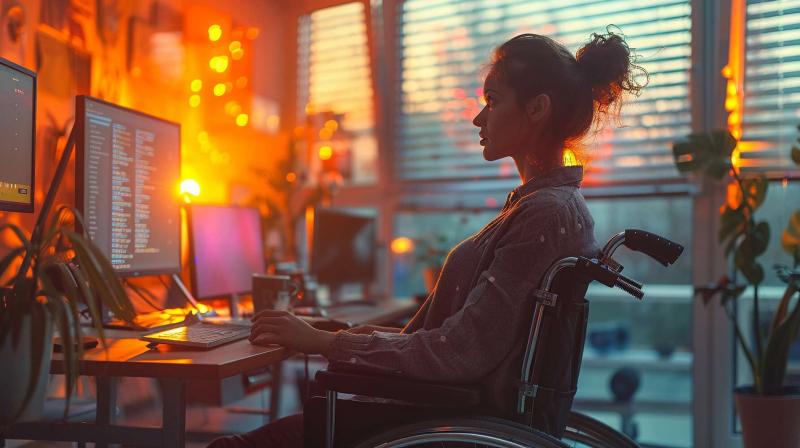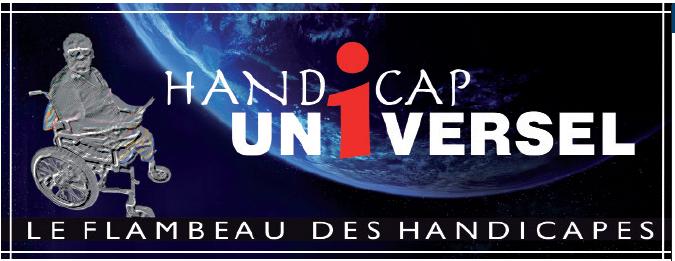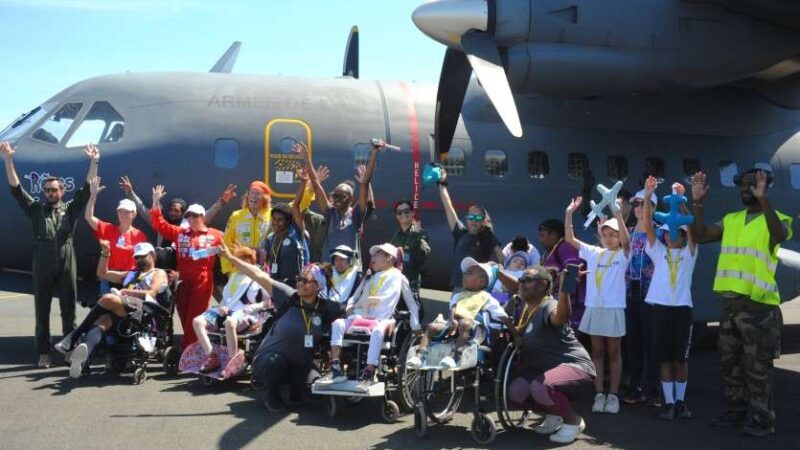
Technology is constantly evolving, and it’s helping people in many ways. This includes people with disabilities, who make up a significant portion of the world’s population. Nearly 1 billion people, or about 15%, live with disabilities and face everyday challenges. Assistive technology can be a real lifesaver for them.
The recent pandemic made things even tougher for many people. This included people with disabilities, who often rely on help from others. Thankfully, assistive technology has stepped up to the challenge. It’s allowing people with disabilities to do things more easily that might have been difficult before. With this kind of support, they can live more independent and fulfilling lives.
There are many different kinds of assistive technology available, from simple tools to more complex devices. These range from smart glasses to electric wheelchairs, and even canes that use artificial intelligence to help people avoid obstacles. No matter what kind of disability someone has, there’s likely some low-tech and high-tech assistive technology that can make their life a little easier.
Learn more about types of assistive technology here: https://www.continualengine.com/blog/low-tech-vs-high-tech-assistive-technology/
What is Assistive Technology?
Assistive technology (AT) includes tools and equipment designed to help people with disabilities. These tools range from simple items like walking sticks to complex software programs. AT aims to make tasks such as communicating, learning, or working easier for individuals with disabilities.
AT varies widely, offering both high-tech solutions and everyday items with special features. For example, a keyboard with larger buttons can help someone with limited hand movement, while text-to-speech software benefits those who have trouble seeing or reading. Some apps enable people with speech difficulties to communicate by typing commands that are then spoken aloud.
List of Assistive Technology Tools
1. One Button Computers
These simplified computers are designed for individuals with limited motor control. They allow users to operate the entire system with a single switch or button. These computers often come with specialized software featuring large icons and simplified menus for easy navigation.
2. Adaptive Keyboards
These keyboards differ from standard keyboards in layout, size, or key functions. They might have larger keys, special key arrangements, or features like single-hand operation to make typing easier for people with limited dexterity or coordination.
3. Text-to-Speech Software (TTS):
This software reads aloud the text displayed on a computer screen. It’s a valuable tool for people with visual impairments or reading difficulties, allowing them to access information independently.
4. Voice Assistants
Virtual assistants like Siri, Alexa, or Google Assistant are becoming increasingly popular assistive tools. They allow users to control various devices, access information, get directions, make calls, and much more using simple voice commands. This hands-free approach can be a great help for people with limited mobility or dexterity.
5. AI-Powered Smart Canes
These innovative canes use sensors and artificial intelligence to enhance navigation for people with visual impairments. They can provide real-time obstacle detection, identify landmarks, and even offer voice guidance for safer and more independent travel.
6. Smartwatches for Visually Impaired People
Smartwatches can offer a variety of features helpful for people with visual impairments. These can include voice notifications, text-to-speech conversion for messages and alerts, Braille displays, and even features to assist with time management and organization.
7. Live Listen (Apple Feature):
People who are blind or have low vision can enjoy podcasts, broadcasts, and audiobooks just like anyone else. Apple’s Live Listen feature helps them by making sound clearer and easier to hear. With a single tap, you can use your iPhone, iPad, or AirPods to pick up sound from your environment.
While Apple designed Live Listen to improve sound quality for people with hearing difficulties, it’s also helpful for anyone who wants to hear conversations in a noisy room more clearly. To turn on Live Listen, simply add it to your Control Center. Look for the ear icon, tap it, and choose Live Listen. Then, just hold your device near the person speaking.
8. Smart Glasses
Smart glasses are still in development, but they hold great promise as assistive tools. They can offer features like text-to-speech conversion for visual information, magnification for low vision, and even real-time translation assistance for people who are deaf or hard of hearing.
9. Open Character Recognition Software (OCR)
OCR software can convert scanned documents, images, or printed text into digital text files. This allows people with visual impairments or reading difficulties to access information from physical materials and convert it into a format that works with text-to-speech software or other assistive technologies.
10. Smartphones for Older Adults
Smartphones offer a wide range of features that can be helpful for older adults, even those who are not necessarily tech-savvy. Larger screen options, voice-to-text messaging, video calls for connecting with loved ones, and medication reminder apps can all contribute to increased accessibility and safety.
Closing Thoughts
As technology continues to progress, the future of assistive technology is incredibly bright. With advancements in AI and accessibility trends, these tools are not just improving the lives of people with disabilities but are also redefining what’s possible. With constant innovation and wider adoption, assistive technology has the potential to break down barriers and create a more inclusive world for everyone.
Want to learn more about AI and accessibility trends: https://itsupplychain.com/ai-and-accessibility-the-duo-you-need-for-enhancing-your-digital-content/
5900 Balcones Drive Suite 8078 Austin, Texas 78731
Continual Engine aims to make inclusive content a reality for everyone by leveraging cutting-edge artificial intelligence (AI) to develop innovative accessibility solutions that empower users with diverse needs. With AI technology that automates tasks like generating image descriptions and captioning videos, ensuring high-quality results at an efficient pace, Continual Engine empowers organizations to focus on their core strengths while delivering accessible materials that meet the highest standards. Our solutions are utilized by educational institutions, publishers, and businesses worldwide, fostering digital inclusion and empowering them to level the playing field for all.
Source: https://www.openpr.com/news/3843622/10-must-have-assistive-technology-tools-for-disabled-persons






